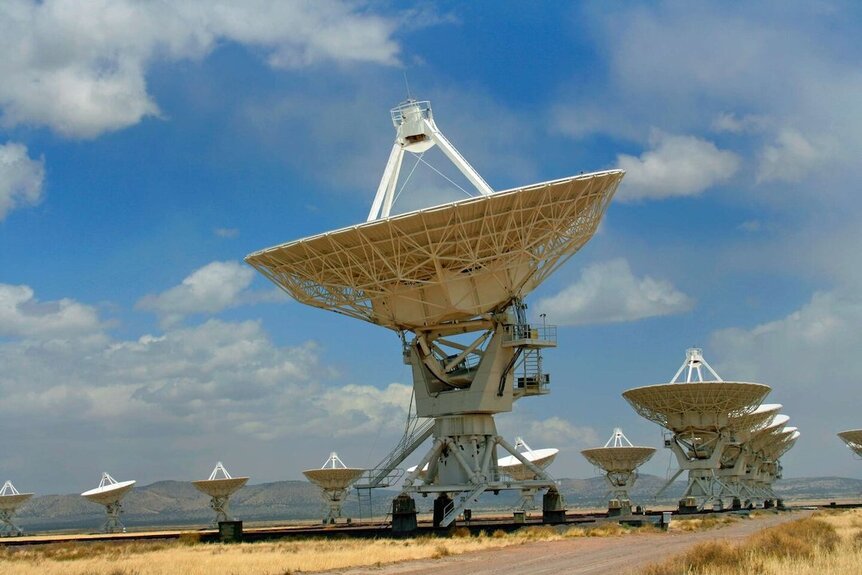Create a free profile to get unlimited access to exclusive videos, sweepstakes, and more!
Astronomers just picked up a 9 billion-year-old radio signal from space
These compositions are chemical, not musical.

In Resident Alien’s Season 2 episode “Radio Harry” (now streaming on Peacock!), Harry takes his alien communications device to a mountain top in order to get the best connection with the passing extraterrestrial radio transmitter humans know as ‘Oumuamua. You might remember remember ‘Oumuamua as the earliest discovered extraterrestrial object that made headlines in October of 2017. As far as we know it was just a weird space object and not advanced communications hardware from another world.
Even if it were an alien radio receiver, there isn’t much we could do about it. Instead of trying to send signals to passing alien invaders, scientists spend a lot more of their time listening for signals from deep space. They aren’t looking for the coded messages of vicious extraterrestrials, but the coded messages of the universe itself. That’s because cosmic objects like galaxies regularly emit radio signals in specific wavelengths, and the details of those signals can tell astronomers about the composition of those objects.
According to a recent new release from McGill University, astronomers looking for a radio signal known as the 21 Centimeter Line have picked up the signal from a galaxy 8.8 billion light years away. Generally speaking, radio signals get weaker the further they travel. That means there is an effective limit to how far away we can listen in, depending on both the strength of the signal and the sensing limitations of our instruments.
RELATED: Searching for Extraterrestrial Intelligence: The science behind 'Contact'
Prior to this work, radio signals at that frequency had only ever been picked up from nearby galaxies. But astronomers were able to pick it up from much farther away using the Giant Metrewave Radio Telescope in India, thanks to one of nature’s most informative tricks: gravitational lensing.
You might remember gravitational lensing from the role it played in the first round of JWST photographs. By way of a refresher, that’s when the gravity of a large object, like a galaxy or a cluster of galaxies, bends the light (in this case radio waves) away from its undisturbed path. That bending not only changes the course of the light, but it can also magnify the signal.
The signal astronomers picked up came from the galaxy SDSSJ0826+5630 (a catchy name if we’ve ever heard one) and was emitted when the universe was less than 5 billion years old. As the signal raced out across the universe, away from its point of origin, it passed very near another galaxy located between its starting point and Earth. That galaxy magnified the signal by a factor of 30, according to researchers.
Not only is picking up the signal from that distance a technological and physical feat, but it also provided information about the composition of a galaxy much nearer the beginning of the universe. This discovery reinforces the idea that astronomers can peer further into the recesses of the early universe than might otherwise have been possible by seeking out gravitational lensing sites and seeing what’s beyond them. And those abilities will only increase as we develop even more advanced telescopes.
Just maybe, if we keep pushing the boundaries of our technology and the boundaries of what the universe allows, one of these days the signal we pick up might actually be from an alien after all. We hope they’re friendly.
In the meantime, you can hang out with a semi-friendly procrastinating conqueror from beyond the stars in SYFY’s Resident Alien, streaming now on Peacock!



























